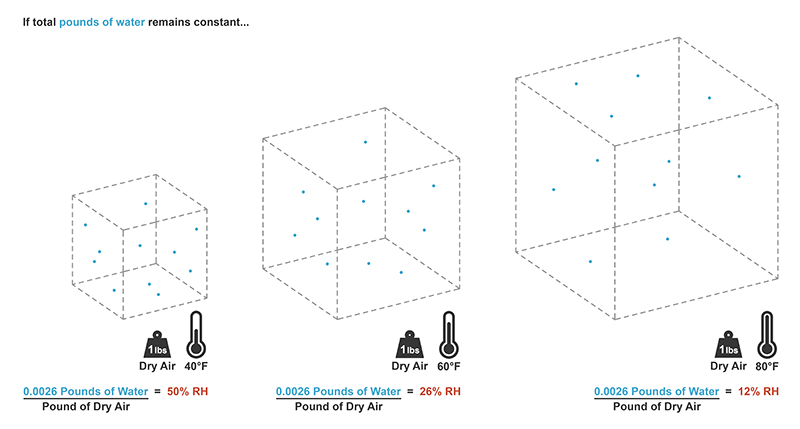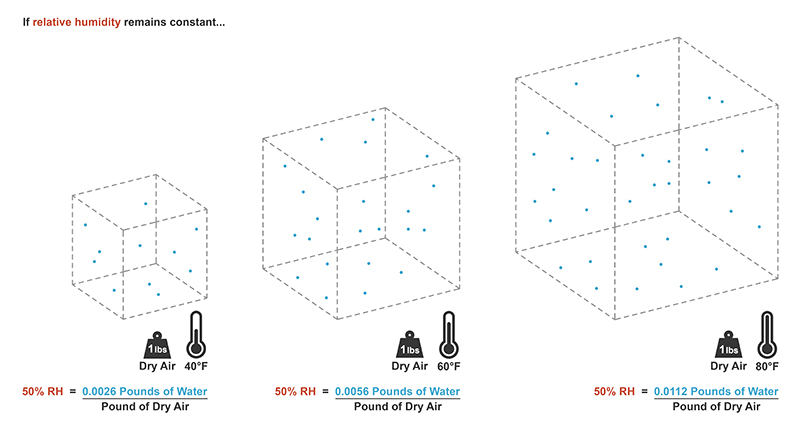Defining Humidity Ratio and Relative Humidity

How does a hot-air balloon rise? Fire up the burner and the temperature of the air captured within the balloon increased. The molecules of the air take on the thermal energy and become more excited. The excited molecules create more space between them. As a result, the air expands as its temperature increases. Thus, one pound of air at 80 degrees Fahrenheit is a larger volume than one pound of air at 60F, which is a larger volume than one pound of air at 40F.
Moreover, air always has some amount of moisture in it. Proportionately, it is a very small amount of moisture relative to the overall air mass, but it is in there.
Also, air can only hold so much moisture. As air gets warmer and expands, it has the ability to hold more moisture. As the air temperature drops, it has less capacity to hold moisture.
Humidity Ratio
There is a fundamental relationship between dry-bulb air temperature and the amount of moisture present in any air-vapor mixture. This relationship can be described graphically with a simple chart (Fig. 1). The chart is constructed by plotting dry-bulb air temperature on the horizontal axis and a scale of the humidity ratio of the air on the vertical axis. Humidity ratio is the ratio of weight of moisture to the weight of dry air in the air–vapor mixture (e.g., pounds of water/pounds of dry air).
|
Figure 1: Air saturation as a function of dry-bulb air temperature. Illustration courtesy of author. |
Relative Humidity
Relative humidity (RH) is the humidity ratio of the air expressed as a percent of the total saturation point for that specific temperature. This can also be expressed graphically (Fig. 2). Relative humidity curves (lines of constant relative humidity) can be plotted by simply dividing the vertical humidity ratio line at any specific temperature proportionate to the saturation line. Repeat this for various temperatures and connect the points representing the same proportion of full saturation.
|
Figure 2: Relative humidity curves created by dividing vertical humidity ratio lines into equal parts below the saturation line. Illustration courtesy of author. |
Humidity Ratio vs. Relative Humidity
If the same total weight of water vapor relative to the weight of dry air is held constant as the air temperature increases and expands, the relative humidity of the air will become less (Fig. 3).
|
Figure 3: If the total weight of moisture is held constant, as dry-bulb air temperature increases, the air expands and the relative humidity drops. Illustration courtesy of author. |
On the other hand, if the relative humidity is to be held constant as air temperature increases, more moisture will need to be added to keep up with the increasing capacity of the air to hold moisture (Fig. 4).
|
Figure 4: If relative humidity is to remain constant, as the dry-bulb air temperature of an air mass increases and expands, more moisture will need to be added to keep up with the air's increasing capacity to hold moisture. Illustration courtesy of author. |
This relationship between dry-bulb air temperature and the humidity ratio is critical to understanding heat transfer and psychrometrics.





